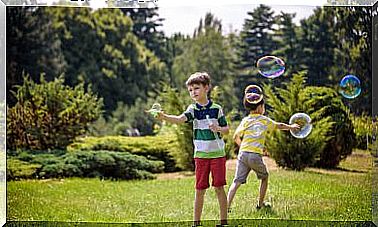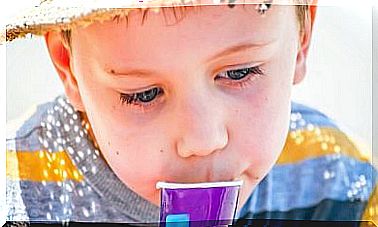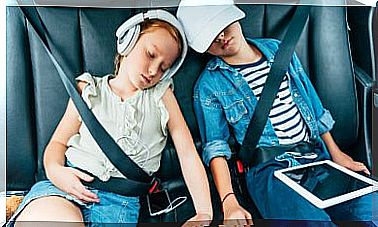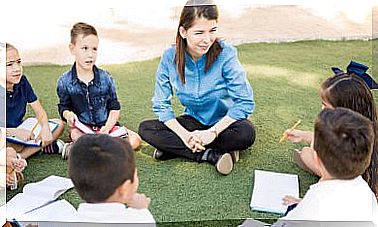5 Mindfulness Exercises For Children
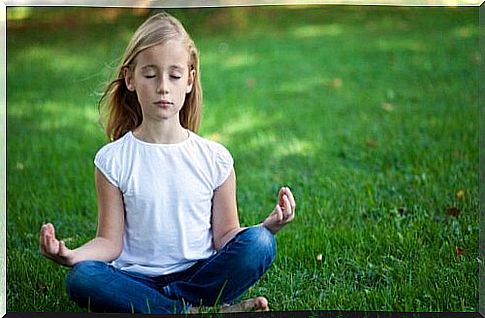
Mindfulness exercises for children aim to stimulate mental and emotional skills. By carrying out very simple activities, the child can be helped to strengthen different areas of the brain that participate in their intellectual tasks.
First of all, we must make it clear what we mean when we talk about mindfulness exercises for children. The word mindfulness is an English term that means ‘the characteristic of a person to pay full attention to their activities or responsibilities’. In other words, it would be to be present in the place where we are, with our mind set on it.
Having detailed this, we can affirm that these are mental exercises to strengthen the attention span in children. Lately it has become common to find children who have trouble staying focused or memorizing information. This may be due, among other things, to the large number of external stimuli that they constantly face (television, mobile phones, etc.).
Benefits of mindfulness exercises for children
Some of the advantages of this type of activity are:
- They develop attention and memory.
- They encourage creativity.
- They make it possible to distinguish and manage emotions.
- They improve academic performance.
- They help to remain calmer and balance in the face of adverse situations.
- They awaken your senses and the coordination between them.

5 mindfulness exercises for children
If your child is very distracted and this affects his school performance or his daily activities such as learning to read or write, we recommend some mindfulness exercises for you to work with him:
- The visitor: make him imagine that he is an astronaut or a being from another planet visiting Earth for the first time. Next, give him an object and ask him to describe it using his five senses. It must tell what shape it has, how it smells, what it tastes like (if it is a fruit, for example).
- The walk: Take him out for a walk and ask him to focus exclusively on what he sees around him. Try not to distract him by not talking to him or suggesting anything to him. Then, do a review together of the objects, animals and people that you came across, trying to be as detailed as possible.
- The frog: consists of sitting in a comfortable position and simply observing what is happening around us. Like frogs, who stand expectantly and observant, puffing out their bellies to the rhythm of their breathing. Suggest that your child imitate this behavior, paying attention to his own body and without falling into the distractions of the thousands of activities that cross his mind.
- The bell: you should ask the child to focus exclusively on the appearance of the sound of a bell, which you can ring at any time. With your eyes closed, you should raise your hand when you feel the sound come and go. Thus, your attention should be focused solely on this stimulus.

- Attention when eating: normally, we eat while doing something else. This exercise seeks just the opposite. During breakfast, lunch or any other meal, tell your child to use all his senses to perceive the food he eats. You must identify color, flavor, texture, taste, smell, and everything you can. Also, try to help him focus on food, eat slowly (recommended by nutritionists), and keep him away from television during these times. You will see that it will become, over time, a very healthy habit.
Tips for doing them :
- Constancy : you cannot get immediate results. Pick a couple of days a week, at a certain time, and set them as practice times. It’s just a few minutes, it’s worth the effort.
- Context : since concentration, attention and memory are sought to be worked on, it is best to look for secluded places as far as possible quiet and with few distractions.
- Fun: If there’s an exercise that particularly grabs you, feel free to repeat it. Also, always try to instill a playful attitude to all these activities to prevent them from becoming a burden.
- Share: ask him how he felt after doing the exercises, ask his opinion and always, absolutely always, appreciate his effort. If you repress him for not achieving the “expected” objectives, you will only discourage him and get him to abandon the routine of activities.
Lastly, we recommend that you follow the process very closely, that you write down the results and thus evaluate your child’s progress. It is a new experience for both of you, make sure it is enjoyable and entertaining!





